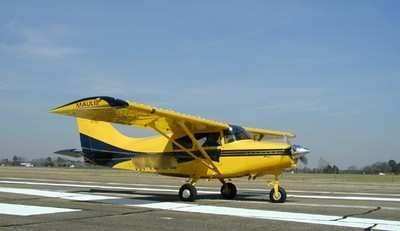Wed, Feb 18, 2015
Probable Cause Report Released From Parkers Prairie, MN Maule Accident
Sometimes it just gets back to the basics. Such is the case in a probable cause report released by the NTSB from an accident in February, 2013 in Parkers Prairie, MN, that resulted in the fatal injury of the pilot of a Maule MXT-7-180.

According to the report. the pilot was returning home from a cross-country business trip when the accident occurred. A witness reported hearing a “loud pop” that sounded like an “engine backfiring” followed by the sound of impact. Another witness reported seeing the airplane flying low and hearing the engine sputter just before the airplane impacted terrain. The airplane impacted a snow-covered field and traveled about 300 ft before it came to rest. First responders reported smelling fuel near the main wreckage. A postaccident examination of the airplane and engine did not reveal any mechanical anomalies that would have resulted in the accident.
The airplane’s fuel tanks were filled before departure. Each main fuel tank held 20 gallons of usable fuel, and each auxiliary fuel tank held 15 gallons of fuel. The main fuel tanks supplied fuel to the engine. The fuel selector was found in the “both” position. The auxiliary fuel tanks replenished the main fuel tanks via transfer pumps that were turned on by switches in the cockpit when needed; the fuel transfer pump switches were not located in the wreckage. The airplane’s estimated fuel consumption rate was about 9 gallons per hour. According to the tachometer, the flight was 4.1 hours long, which would have used about 37 gallons of fuel plus additional fuel for taxi and climb. Thus, it is likely that the pilot did not transfer fuel from the auxiliary fuel tanks to the main fuel tanks in a timely manner, which resulted in the engine being starved of available fuel.
The National Transportation Safety Board determines the probable cause(s) of this accident to be the pilot’s failure to transfer fuel from the auxiliary fuel tanks to the main fuel tanks in a timely manner, which resulted in fuel starvation to the engine.
(Image from file. Not accident airplane)
More News
Airport Marking Aids Markings used on runway and taxiway surfaces to identify a specific runway, a runway threshold, a centerline, a hold line, etc. A runway should be marked in ac>[...]
"It is extremely difficult, if not impossible, for manned aircraft to see a drone while conducting crop-enhancing and other aerial applications at low altitudes and high speeds. We>[...]
Aero Linx: The Skyhawk Association The Skyhawk Association is a non-profit organization founded by former Skyhawk Pilots which is open to anyone with an affinity for the A-4 Skyhaw>[...]
“The T-54A benefits from an active Beechcraft King Air assembly line in Wichita, Kansas, where all required METS avionics and interior modifications are installed on the line>[...]
Aero Linx: Aerostar Owners Association The Association offers the Aerostar Owner a unique opportunity to tap an invaluable source of information concerning the care and feeding of >[...]
 ANN's Daily Aero-Term (04.28.24): Airport Marking Aids
ANN's Daily Aero-Term (04.28.24): Airport Marking Aids Aero-News: Quote of the Day (04.28.24)
Aero-News: Quote of the Day (04.28.24) ANN's Daily Aero-Linx (04.28.24)
ANN's Daily Aero-Linx (04.28.24) Aero-News: Quote of the Day (04.29.24)
Aero-News: Quote of the Day (04.29.24) ANN's Daily Aero-Linx (04.29.24)
ANN's Daily Aero-Linx (04.29.24)



